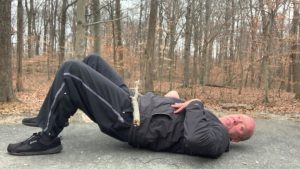Nothing says Happy New Year like watching movies all day (we did Almost Famous and The Secret Life of Walter Mitty) and, of course, a good self test to check your hip, pelvis, and core stability 🙂
Since I’m still on the “transition with grace” theme, I thought I’d share a story about how a “transition” helped uncover a key link for a patient who came in this past Monday with painful hips.
Her hip muscle imbalance pattern was very common so I thought it might help a lot of other folks if I shared how we discovered one of the key dysfunctions by simply having her slow down through a transition during a self test.
If you fail this stability test, it can put you at higher risk of hip pain, back pain, knee pain, and sacroiliac. pain.
It’s a quickie and immediately useful and once again shows the importance of slowing movements down and mining the gold in the transitions from on support to another.
Enjoy and here’s to an awesome 2020!
Talk soon,
drh
P.S. We’ll be digging even deeper into the “bridge transition test” I share in this episode during the upcoming “Transition with Grace” FREE Online Workshop.
I can’t wait to share it with you.

BRAVO. Slow down, such a simple concept. Transitioning, I always hurry through, cause, just like you mentioned, I will fall over or get sloppy. Thank you again my friend. You are the greatest!!
Happy, healthy, prosperous New Year.
Mary
Simple is best. Slow down and pay attention to every moment 🙂
Many thanks,
You are truly inspirational!
Sarah
My pleasure. Happy new year, Sarah.
Really clear and useful explanation, good man .
Happy new year
Glad it helped, John. Happy new year to you, too.
You truly do give out gems. I am a personal trainer and consistently get reminders from you about how to help my clients. Thank you.
Personal trainers are on the front lines out there. These little details will save a lot of people from injury down the line. Keep spreading the word, Aimee.
Another great lesson. Thank you. I think I am already on the list for transitions
Clearly I still have a long way to go before my core strengthens! Felt very tight/sore in the chest/rib area when I tried to get up after trying the exercise.
Will keep trying !
interested in your exercise techniques as i am getting older and need to keep my strenght up
You mention how when you do this exercise you experience the opposite side engaging to allow the hips to stay elevated. However, I seem to feel it more in the SAME shoulder and side muscles as the leg I’m lifting. Do you have any comments?
You’ve got it right, Cherie. I was referring to the opposite side of the supporting leg.